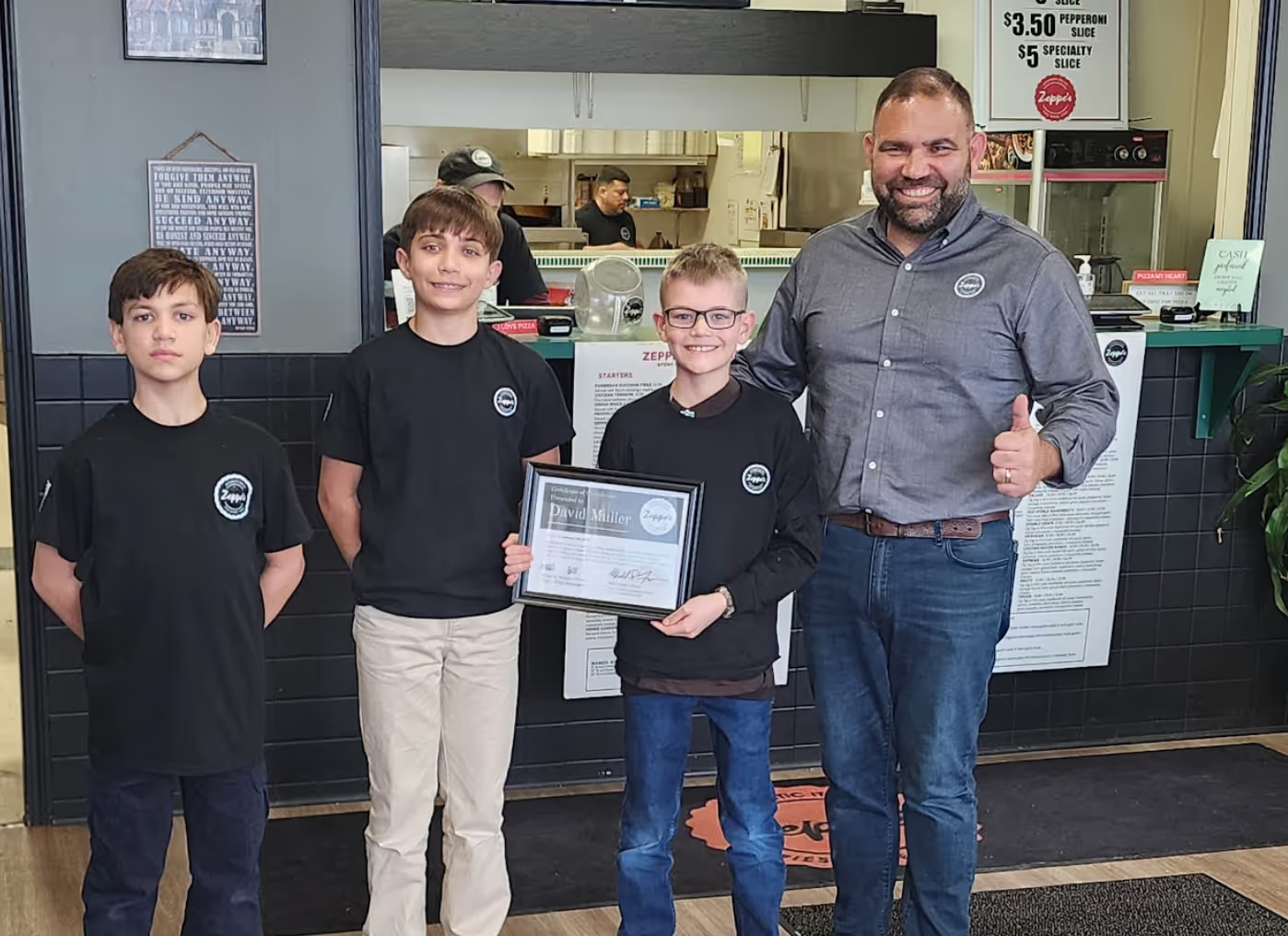How Google Reviews Boost Restaurant Reputation and Business

Studies show that as many as 94% of customers decide where to eat based on online reviews. Restaurants with an average Google review rating of 3.5 stars or higher earn 82% more revenue than those with lower ratings. Want to drive more customers into your restaurant and see those customers spend more? You need positive Google reviews and lots of them.
What customers say in their online reviews may feel out of your control, but there are several ways to keep your restaurant on the right side of the star system. In this article, I’ll give you my best tips for gathering customer Google reviews and improving your restaurant’s Google rating. Plus, I’ll tell you the number one no-no in review gathering.
Why Google is Such a Big Deal
Your Google reviews are a major foundation for your restaurant’s online reputation. In a world where customers can access the internet from their pockets, your online reputation is as important to your restaurant business as your physical address. Most customers (89%) check online reviews before trying a new business. And most of those searches are performed on Google, especially when customers look specifically for reviews.
Search engine consulting service Brightlocal found that 83% of consumers search for business reviews, specifically on Google. The competition isn’t even close; in Brightlocal's 2025 survey, local news was the second most popular review source (48%), and Yelp was third (43%).
Your Google rating also follows your restaurant online. Anytime a customer finds your restaurant website or your location on Google Maps, your Google rating appears just below your restaurant name.

How Google Reviews Influence Business Growth
If you’ve been running a restaurant for any time at all, you’ve probably had a gut feeling that your Google reviews impact your sales and customer traffic. You’re not wrong. Many great studies from search engine experts and restaurant industry groups illustrate the strong connection between business success and the quality and quantity of Google reviews.
- Higher star ratings increase sales: The Harvard Business Review found that every one-star increase in a business’s online rating can increase revenue by 5% to 9%.
- Customers want to see 4+ stars: Research by reputation management company Guaranteed Removals found that 91% of customers said they avoid dining at establishments with fewer than 4 stars.
- Reviews improve Google ranking: Brightlocal’s survey also found that restaurants with the highest number of reviews were more likely to appear in the top three results in Google Maps (also known as the “Local 3-pack”), where customers are more likely to click.
- High review ratings get more clicks: Another study by Brightlocal found that businesses received 25% more clicks on Google when their ratings increased from 3 to 5 stars. Each of those clicks could be a future order or a future regular customer.
- Customers trust businesses with higher review numbers. Two-thirds of customers say they trust the ratings of businesses with 20 to 99 reviews more than businesses with fewer reviews.
- Engagement is important: Google’s resources for small business owners state that businesses that respond to customer reviews are seen as more active and trustworthy by the search engine than unresponsive businesses. Google’s published advice is as close to a cheat code as you’ll get.
- Recency matters: While diving deep into some client data, local search engine optimization service Sterling Sky found that small businesses performed better in Google search when they had a steady number of recent reviews. So, if you haven’t had a Google review in a while, it’s time to find ways to make your service memorable enough to post about.
Practical Strategies to Maximize Google Reviews
So, what can you do to encourage a high number of reviews and keep your ratings above that 4-star mark? Let’s start with some strategies for building your volume of reviews:
- Engage with guests: Introduce yourself to customers and encourage your managers to do the same. Customers are more likely to review a business (and review it positively) when they feel a personal connection.
- Personalize experiences: Track and commemorate customer milestones like birthdays, anniversaries, and graduations. A simple birthday message printed at the top of the menu or a handwritten anniversary message on a dessert plate goes a long way to making customers feel special, and customers who feel special leave positive reviews.
- Request reviews: Print cards with a short version of your business story and an appeal to support your small business by leaving a review. Ask regular customers personally to add reviews; they likely have many positive experiences at your resaurant, but may have never left a review.
- Leverage technology: Many restaurant software tools include review prompts and feedback functions. Shipday, for example, can automatically prompt customers to write a Google review at the end of a delivery interaction. Add QR codes that direct customers to your Google review page at the bottom of your guest checks or on table tents.
- Avoid the Number One No-No: It seems like a no-brainer to offer a free dessert or a 10% discount to customers who review you on Google. Do not do this. Google sees this kind of gift as a form of “fake engagement.” If you are caught— and it all it takes to get caught is one customer sending a photo of your offer to Google— Google will remove reviews. Save the freebies and discounts for customers who sign up for your loyalty program.
Now that you’ve got a steady volume of reviews, there are a few additional things you can do to keep your reviews positive.
- Resolve issues in-house: When your team makes a mistake or you get a complaint from an in-house guest, address it immediately, graciously, and face-to-face. Negative experiences you resolve in real-time are unlikely to appear as negative online reviews.
- Respond to reviews directly: Respond directly to negative online reviews. Reach out to the guest personally via email or phone to help resolve the complaint. Leave a response on the review itself, apologizing (if appropriate) and stating that you contacted the guest directly. This direct response shows prospective customers that you proactively handle customer service.
- Train staff: Create a protocol for your staff to alert a manager as soon as a negative experience occurs. Negative experiences that are resolved quickly can later become positive reviews.
- Set a positive tone: Be open and transparent with staff. Avoid being harsh or punitive with staff who make simple mistakes. If your staff is afraid to alert you to issues or errors, they will hide them instead, making it impossible for you and your managers to handle negative guest experiences quickly.
- Touch every table: Positive reviews come from creating memorable experiences. Make sure you or a manager interacts with every table and every service. Attention from a manager or owner helps guests feel welcome and can create stronger bonds with the business.
Remember, criticism can be a gift. Are some negative customer reviews simply attempts to get something free? Sure. But in my experience, where there is smoke, there is a fire. If a dish regularly appears in negative reviews, remove it from your menu and reevaluate. If your catering service drives the most negative reviews, dig in and see what improvements you can make. Then, return to your review page to thank customers for taking the time to highlight an area where your business might improve.
Know When to Use AI
Online review platforms like Yelp have stated that they will suppress AI-generated reviews. Google clearly states that it will remove “fake” reviews (though they don’t explicitly ban AI content). So, while it might be tempting to flood your online review pages with AI-generated “reviews” touting everything your restaurant does well, don’t do this. A sudden flood of five-star reviews is sure to be flagged.
There is a way to use AI in reputation management, though, to save time responding to customer reviews. Responses are especially important for negative reviews; though they can be agonizing to write. Many restaurant-supporting software tools, like Shipday, have AI response generators built into their software platforms, making it easier than ever to respond appropriately to every review.
Real-World Case Studies: Restaurants That Systematically Improved Google Ratings
You don’t need to use all of the strategies I listed above. Many restaurants grow their review volume and overall ratings by focusing on a couple key changes. I’ve included a few case studies to illustrate how these tips work in real-world restaurants.
Case Study: Improve Service
Italian eatery La Familia Katonah in Katonah, New York, saw several negative customer reviews from delivery experiences. Manager Josh Fishman brought more delivery in-house, using staff delivery drivers and organizing orders with Shipday. The restaurant saw a quick turnaround in negative customer reviews, resulting in 53 new 5-star Google reviews.
Do this in your restaurant: Look for a common theme in your negative Google reviews. Is there one part of the service that appears frequently? Do customers complain that you regularly sell out of favorite dishes? The long wait at the front desk? Rude delivery drivers? Consider training or tech solutions to resolve these issues.
Case Study: Selectively Invite Reviews
A restaurant owner on Reddit printed business cards with QR codes that led directly to the restaurant’s Google Review page. The staff are trained to only hand out the cards to customers that have had a great experience, using a “simple script” that the owner suggests to draw guests’ attention to the cards. The owner says this has driven an increase in 5-star reviews, by asking for the review at the moment the guest is happiest and the most likely to leave a review.
Do this in your restaurant: Printed cards are a great in-person strategy to drive reviews. With the right technology tools, you can do the same thing digitally. For example, Shipday includes tools to directly request Google reviews from delivery customers who have had a great experience. These requests appear directly on customer smartphones, where they are most likely to write the review.
Case Study: Give Mints
It's long been known that giving mints to restaurant customers increases tips; a 2006 study found increases from 14% to 23% based on when and how many mints the server offered. One restaurant owner finds that tucking mints into their check presenters (that also contain a QR code link to their review page) has increased their review numbers and review averages, saying “We’re a year old, got almost 500 reviews, and a 4.9 rating. “
Do this in your restaurant: This restaurant uses Mentos, specifically in this case study. Opting for a fan-favorite mint rather than a standard bargain mint might set your restaurant apart and make customers feel more appreciated. Mints can also be branding; you can get a case of 1000 individually wrapped buttermints printed with your restaurant logo for around $100.
How Tools like Shipday in Enhance Google Reviews
I mentioned leveraging technology as a key strategy for increasing customer review volume, but what exactly does that look like? Let’s break down how a tech-based review tool like Shipday works for your restaurant. While Shipday is primarily known for delivery management, its review collection system has become a valuable feature for independent restaurant operations.

Shipday integrates directly with Google’s review system. This integration means your restaurant can send happy customers a personalized review request via email or SMS text message and post the review to your Google review page. Sending these messages immediately after a successful delivery prompts customers to review when they are most satisfied, translating into higher review ratings.
Managing review requests and resulting reviews in a single dashboard makes it easy to track your efforts over time. Reporting and analytics allow you to identify trends in reviews, and see your ratings and response rate improve in real time.
Restaurants using Shipday’s review management system report:
- Higher review collection rates compared to manual review collection methods
- Significant shifts in positive-to-negative review ratio
- Saving 5 to 10 hours weekly on review management
Saving time on administrative tasks like writing review responses gives you back hours every week to spend more effectively growing sales, training staff, or reducing costs. Work smarter and grow your business faster with affordable tech tools like Shipday.
Conclusion
Leveraging the power of Google reviews is not a trend; it is a key component of everyday restaurant management. A high volume of positive Google reviews directly influences your reservation volume, check average, and overall profitability.
Applying the steps outlined in this article, you can systematically improve your Google review profile. Start implementing these strategies today, leveraging technology like Shipday to speed the process and ensure your restaurant’s digital reputation matches the quality of your in-person dining experience.
If you’re ready to boost your restaurant’s reputation with Shipday, start your free trial today.
Additional Resources/ You May Also Like:
- How to Market Your Restaurant on Social Media
- How to Improve Customer Experience in Restaurants
- How to Improve Customer Service with Restaurant Delivery
Index
Ready to get started?
Play around with it first, add your team, pay later.








.avif)






%201.svg)
